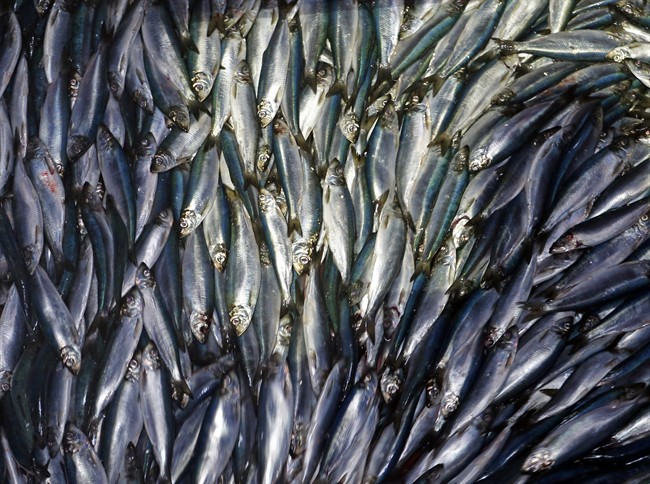Editor’s note: An earlier version of this report said the report was compiled by researchers from University of Victoria and Dalhousie. In fact, it was compiled by Oceana. Global News regrets the error.

Nearly half of the fish we catch are not the target species, while the rest of the catch is dealt with in various ways – many of which are endangering marine life, a new report says.
This practice by fisheries, also known as by-catch, is reportedly one of the largest threats to the world’s oceans that contributes to the dramatic decline of certain fish populations.
A new report estimates fisheries discard over 10.3-million tonnes or 22.7-billion pounds of by-catch every year. That’s around 48.4 per cent of the total catch made by fisheries in Canada.
READ MORE: Whirling disease in fish detected in Oldman watershed
The report was compiled by Oceana, an independent charity that advocates for the conservation of oceans.
“The federal government does not accurately track by-catch in far too many of our fisheries,” said Josh Laughren, executive director of Oceana Canada. “The information that is available shows that it threatens the health and abundance of many of Canada’s marine species, including some of those most at risk.”
He says that when we set the number of fish that can be caught, while keeping that species from being extinct, by-catch isn’t considered.
“If there’s another huge amount that’s caught as by-catch and not measured, all of a sudden, what we thought was sustainable, isn’t,” he explained to Global News.
Even though the fish get thrown back, they aren’t always thrown back healthy – the fish can be dead or dying.
“For those endangered species, there is a risk, in some cases, to their survival. By-catch is in some cases the biggest threat to their survival,” Laughren said.
The report found that more consistent reporting on fisheries and by-catch is needed to properly assess the impact of this practice on sea life.
READ MORE: Climate change could lead to major revenue hit for east coast fisheries: study
So how do we stop it?
Laughren said there’s a few things the government can try.
First, there’s monitoring because, “You can’t manage what you can’t measure,” he said.
Fisheries can also avoid by-catch by making improvements such as using more sustainable fishing gear – so that endangered species like some turtles aren’t caught in the crossfire.





Comments